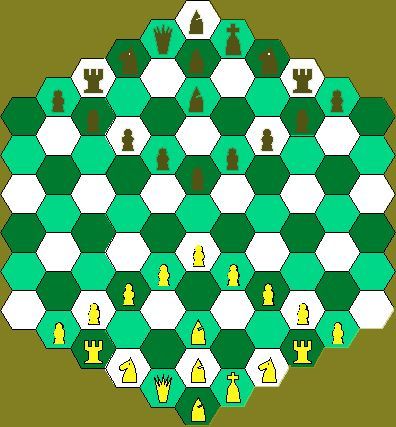Hexagonal Chess (1936) Board Game
Hexagonal Chess, also known as Glinski’s Hexagonal Chess, was created by Władyslaw Gliński in in 1936. It is a variant of traditional chess, played on a hexagonal board with 91 spaces. The game adds a new dimension to chess strategy with its unique board layout and piece movements.
Game Components of Hexagonal Chess
How To Setup Hexagonal Chess
The setup involves placing the pieces on the hexagonal board in a specific configuration. The board is divided into 91 cells, with the middle cell typically being mid-tone. Each player has three bishops and nine pawns, along with the standard chess pieces. The initial array ensures that each piece is free to move from the start. The ranks are curved, with the number of cells decreasing as you move towards the edges of the board.
Gameplay Mechanics and Game Objective
Player Experience
Playing Hexagonal Chess requires a fresh perspective on traditional chess strategies due to the unique movements and board layout. The game challenges players to adapt to new piece movements and spatial awareness. It is particularly engaging for those who enjoy strategic thinking and are looking for a variation that adds complexity to the classic game.
Pros
Cons
Personal Thoughts on Hexagonal Chess
Hexagonal Chess is ideal for chess enthusiasts looking to expand their strategic skills and experience a new dimension of the game. It is particularly suited for those who enjoy problem-solving and are eager to explore different board game mechanics. While it may present a learning curve, the unique challenges and strategic depth make it a rewarding experience for those willing to adapt.
We are supported by our audience. When you purchase through links on our site, we may earn an affiliate commission, at no extra cost for you. Learn more.

